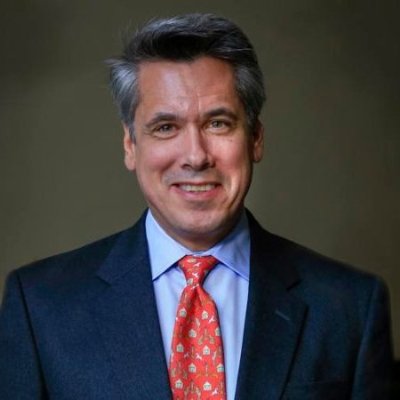The market closed the books on 2009 in early November, but predictions for the new year trade on a calendar basis. Below are ours for the market structure landscape, followed by settlement (T+365) on last year’s list.
1. Dark Pools Get Guardrails. Last May, the SEC announced an end to the "Sirri Doctrine"–a laissez-faire approach to dark pools–and said it planned to address some concerns. Initially expected to take the form of a concept release, but hurried by politics and the press, the SEC proposed three rule changes in October. Two of these–equating an "actionable IOI" with quotations and reducing the Reg ATS display threshold from 5% to 0.25%–are approved. The third, real-time tape illumination of dark trades, is shelved in favor of end-of-day, stock-specific, volume disclosure. Also proposals to make public Form ATSes, and amendments thereto, are considered and accepted. Fair access prompts a fight, but no changes are made. NYSE proves a better partner than Nasdaq as a real-time source of aggregate volume information for individual dark pools. The upshot: less mystery, more rule of law, and no unreasonable new burdens.
2. Internalization: Once More Unto the Breach. Related to the dark pool efforts, the SEC raises the issue of a "trade-at" prohibition for off-exchange venues. Positioned as a policy question–do "dark" executions harm market quality by reducing the incentive to display?–the deeper issue is a Grasso-era commercial chestnut: exchanges versus internalizers. As it has multiple times in the past 35 years, the SEC rejects requirement that off-board venues provide price improvement. When the SEC bans "flash" orders-which are really just an extension of internalization–DirectEdge asks to change its ELP "jump ball" into a 30-millisecond price-based auction, raising the question of subpenny orders anew.

3. How High’s the Frequency, Kenneth? The ever-inflating buzz around high-frequency trading–66%, no 70%, no 120% of volume! Twenty one billion dollars in annual profits!–cools as regulatory attention heats up. Exchange co-location is rightly left alone; "naked" sponsored access goes away via exchange and FINRA rules, as well as the continued migration of high-frequency firms to broker-dealer status. Market surveillance tools and techniques play catch-up. This means few actions against high-frequency types. The current binary view of the world–high-frequency is either the second coming or the cause of cancer–is resolved with a realization: while clearly good for liquidity in the aggregate, even high-frequency firms succumb to human frailty on occasion. Better information, understanding, and surveillance–as opposed to blunt policy change–is the chosen remedy.
4. Equities Exchange Landscape Drab, Options Interesting. Coming off a sugar-high of cheap-stocks and the final leg of a 10-year technology-driven growth spurt, equities volume remains listless. Aside from second- and third-license launches to differentiate pricing and tweak market structure, little happens. But options provides some fireworks. The forward march of the penny pilot and the end of "step-up" auctions via the flash ban puts additional wind at the back of maker-taker markets. The BATS launch is a success, reaching 5% market share by year-end; CBOE’s C2 never happens. An options TRF is offered as a way to resolve exchange-organized payment-for-order-flow.
5. Fungibility Fight. One of the central tenets of the futures world–the trading-clearing vertical–gets a test when upstart ELX attempts to clear bond futures trades on the CME Clearinghouse. NYSE’s Liffe US makes noise as well, launching an effort to cross-margin futures and cash bonds with the DTCC. On the OTC derivatives side, regulators require clearinghouse fungibility as part of the push to central counterparty clearing. As a number of clearinghouses compete to clear various products, one effect is the breakdown of the dealer’s own trading-clearing vertical. In its place, clients choose a handful of derivatives "prime brokers" to clear, but trade independently with an expanded group of counterparties.
6. Bull Market for FINRA. Despite a recent legislative setback, FINRA lays the groundwork for substantial expansion next year. Where there is a regulatory initiative, you will find them: consolidating market surveillance with a pan-market audit trail; doing boots-on-the-ground work with hedge fund registration as self-regulatory organization for investment advisors; implementing a host of rules around OTC derivatives trading, such as margin and business conduct regulation. After merging with the residual of NYSE Regulation, FINRA is the only game in town this side of the NFA.
7. Political Risk: Less Bark, More Bite. The industry ends 2009 surprised and frustrated by its healthy dollop of political attention. Next year will be worse, as Washington moves from debate to action. Truly terrible ideas–think transactions tax, or a U.K./France-style bill of attainder on bonuses–don’t happen. But as the SEC re-asserts itself and Congress finalizes expansive legislation on a host of regulatory issues, political risk will rise, not fall.
2009 Scorecard. Break out the sackcloth and ashes. By our lights, we got it right on one, wrong on five, and pushed on two. Equities trading was difficult in 2009–certainly on the institutional side–and liquidity providers that survived 2008 thrived (particularly on the fixed income side). Along with the SEC, we pushed on short sales: the tick test wasn’t exhumed, but neither disclosure nor a circuit breaker was adopted. We were also half-right on the industry becoming more modest and less complex. (Readers unoccupied with "God’s work" will know which half.)
Regarding our manifold misses: NYSE market share did not quite bottom, though moving to rebates and reducing latency to single-digit milliseconds provided a green shoot. DirectEdge’s market share push in the top half of the year proved that fees still matter and big brokers maintain the whip hand for now. Equities clearing remains staid, as Nasdaq’s cave on plans to challenge NSCC outweighs an emerging relationship between DirectEdge and Quadriserv. Instead of a merger, the SEC and CFTC held hearings and issued a report on "harmonization," and Congress is trying to create additional regulatory councils and agencies as we write. Finally, both CME and ICE kept their senses about them: neither entered equities. Maybe we’ll be back to the high-water mark by 2012.
Jamie Selway is founder and managing director of White Cap Trading in New York. This year’s annual rite, predicting the top stories of the upcoming year, is his fifth.
(c) 2010 Traders Magazine and SourceMedia, Inc. All Rights Reserved.
http://www.tradersmagazine.com http://www.sourcemedia.com/






